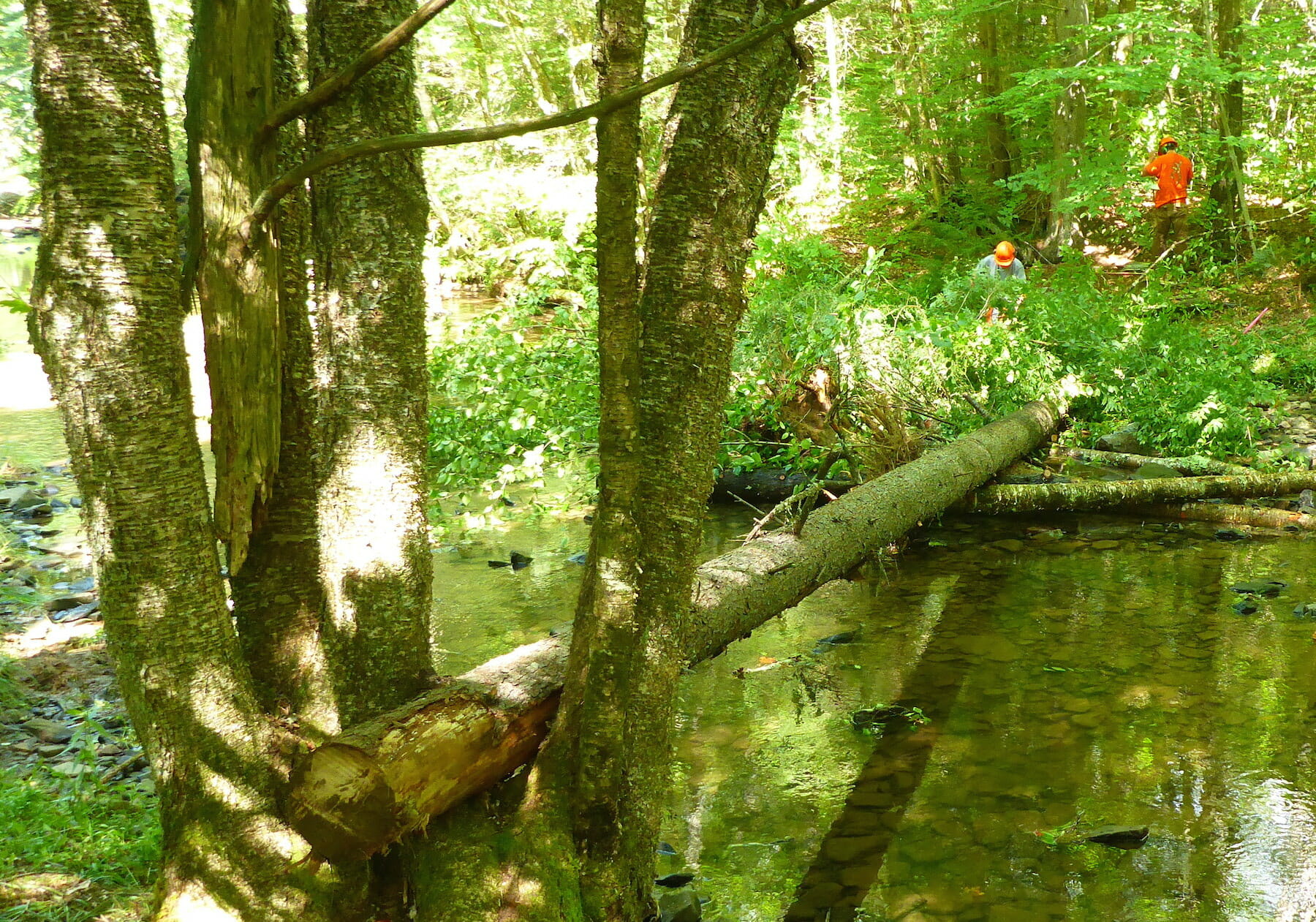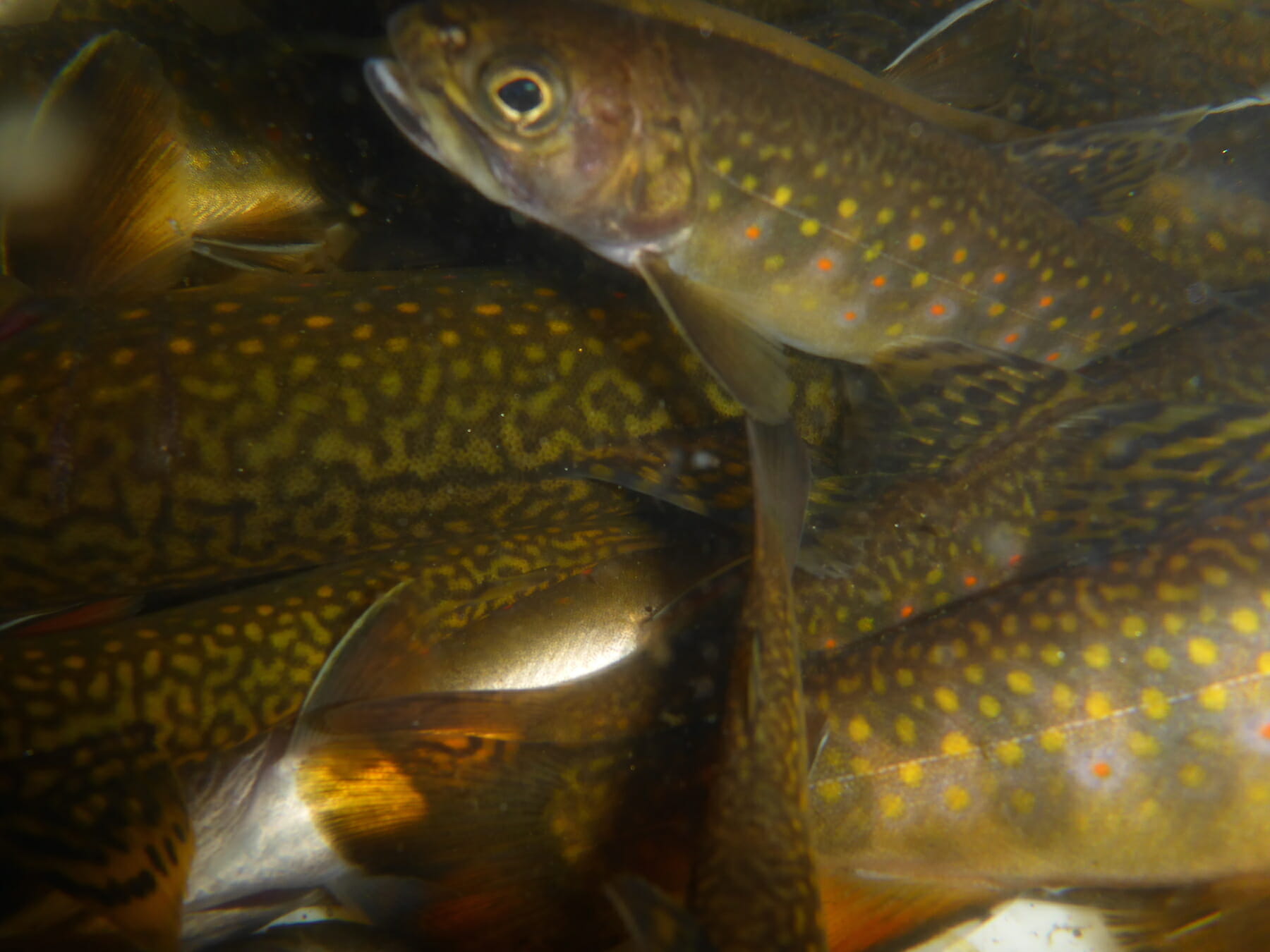By Mark Taylor
Scientists tend to have a pretty simple philosophy about data: More is better.
So Jud Kratzer can be forgiven for not hurriedly working up a paper on results he’s seeing while surveying streams in Vermont, where he has been studying the effects of habitat restoration work on brook trout populations.
After all, it’s only five years’ worth of data.
That said, five years of data is getting there.
So Kratzer, a fisheries biologist with the Vermont Fish and Wildlife Department, is willing to offer some early observations.
“We’ve seen an average of about 150 percent increase in brook trout biomass,” Kratzer said. “I wasn’t expecting to see it that clearly that quickly.”
Kratzer has been working with Trout Unlimited’s Joe Norton, project manager of TU’s Upper Connecticut Home Rivers Initiative, on waters including the East Branch and Black Branch of the Nulhegan River, North Branch and Yellow Branch, the Paul Stream watershed, and the Dennis Pond watershed.
Since 2012 crews have been strategically adding wood — typically in the form of medium-sized trees — to streams. In all, crews have created nearly 400 such sites, which typically feature interlocking logs anchored to the streambank with the aid of a wire winch tool called a Griphoist.
 alt=”” title=”” />
alt=”” title=”” />
The structures are good for stream dynamics, helping reduce channelization, potentially reducing flood risks downstream, and reconnecting streams to floodplains.
The work is also good for stream life, including native brook trout.
Structures can help improve spawning habitat by improving areas of suitable fine gravel where trout make their spawning nests, called redds. Trees can trap leaves, which then support macroinvertebrate insects that are an important foundation of the food chain.
Wood itself provides protective cover for fish. Redirected streamflows create deep pockets that provide holding areas for trout, both adults and young.
Kratzer and Norton have been studying those areas, using electrockshocking equipment to collect trout. The teams tally the temporarily stunned trout before releasing them unharmed.
Kratzer began collecting data two years before the habitat work started, and has three years’ worth of post-restoration figures. They also look at stream sections where no work has been done.
Survey sections are generally 100 to 150 feet long, and the process is to use a depletion approach, repeatedly passing through the section until nearly all of the fish have been collected.
After two years the average biomass numbers had increased 140 percent over the pre-restoration figures. They climbed just slightly for the third year, in 2016, being 150 percent higher than pre-treatment.
Not all sites perform similarly.
Some show higher numbers of adult fish, while others seem to be preferred by young-of-the year.
The improvement bodes well for recreational angling, which is open to the public throughout the restoration area.
In fact, in addition to using the electroshocking gear, Kratzer and Norton have sometimes used rods and reels for informal survey work in restored sections of streams, though not in the sites where they are doing formal survey work.
“We are catching some pretty brook trout,” said Norton, an avid angler and former fly shop owner.
Just as the restoration work will continue, so will the surveys.
It’s only a matter of time before Kratzer has the data in hand to put together that big scientific paper.
The work would not be possible without the cooperation of landowners Weyerhauser and the U.S. Fish and Wildlife Service.
Fishing license sales and federal Sportfish Restoration funds are paying for Kratzer’s portion of the work. TU’s funders are The National Fish and Wildlife Foundation and the Upper Connecticut River Mitigation and Enhancement Fund.
Mark Taylor is Trout Unlimited’s eastern communications director. He toured the Vermont restoration sites in 2014 and hopes to get back to the area in 2017 — with a fly rod in hand.



